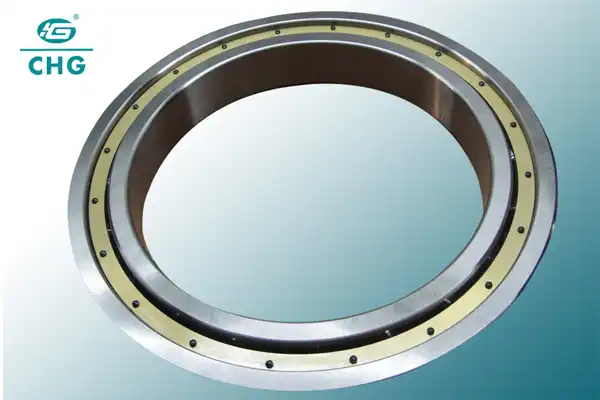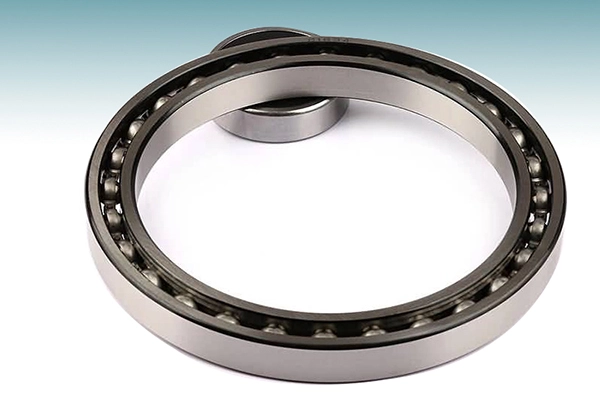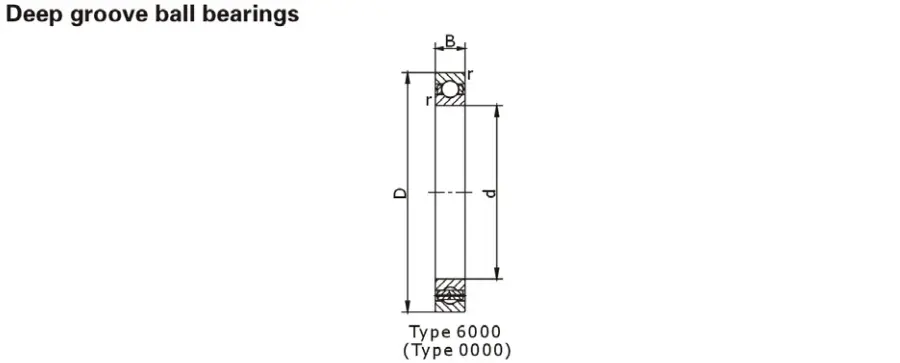How Do I Choose the Correct Size of Deep Groove Ball Bearing for My Application?
Selecting the appropriate size of deep groove ball bearing is a critical decision that can significantly impact the performance, reliability, and longevity of mechanical systems. As one of the most versatile and widely used bearing types in industrial applications, deep groove ball bearings require careful consideration of various factors to ensure optimal performance. This comprehensive guide will walk you through the essential aspects of bearing selection, helping you make an informed decision for your specific application.

What factors affect the load capacity of deep groove ball bearings?
The load capacity of deep groove ball bearings is influenced by multiple interrelated factors that must be carefully evaluated to ensure proper bearing selection. First and foremost, the basic static and dynamic load ratings are fundamental parameters that determine a bearing's ability to handle various loads. The static load rating represents the maximum load that can be applied to a stationary bearing without causing permanent deformation, while the dynamic load rating indicates the load at which the bearing will achieve a basic rating life of one million revolutions.
Material properties play a crucial role in load capacity, with most deep groove ball bearings manufactured from high-grade bearing steel, typically AISI 52100 chrome steel. The material's hardness, durability, and resistance to fatigue directly impact the bearing's load-carrying capability. Additionally, the heat treatment process and surface finishing techniques applied during manufacturing significantly influence the bearing's performance under load.
The internal geometry of the bearing, including the ball size, number of balls, and contact angle, has a direct correlation with load capacity. Larger balls generally provide higher load capacity but may result in increased friction and heat generation. The optimal balance between ball size and quantity depends on the specific application requirements. The raceway design and surface finish quality also affect load distribution and, consequently, the overall load capacity.

Environmental conditions, such as operating temperature, contamination levels, and lubrication effectiveness, can significantly impact the actual load capacity of the bearing in service. Higher operating temperatures may reduce the material's strength and affect lubricant performance, while contamination can lead to premature wear and reduced load-carrying capability. Proper lubrication is essential for maintaining the theoretical load capacity, as it creates a protective film that prevents metal-to-metal contact and distributes loads evenly across the bearing components.
What is the recommended speed limit for deep groove ball bearings?
The speed capabilities of deep groove ball bearings are determined by various mechanical, thermal, and operational factors that must be carefully considered during the selection process. The limiting speed of a bearing is typically expressed as the maximum permissible rotational speed under specific operating conditions. This limit is influenced by the bearing's size, design, cage type, lubrication method, and operating environment.
The cage design plays a vital role in determining speed limitations. Different cage materials and designs offer varying levels of performance at high speeds. Pressed steel cages are commonly used for moderate speeds, while machined brass or polyamide cages are preferred for high-speed applications due to their superior strength and friction characteristics. The cage design must ensure proper ball guidance and adequate lubricant distribution while minimizing friction and heat generation.

Lubrication becomes increasingly critical as operating speeds increase. The lubrication method must be carefully selected based on the speed factor (DN value), which is calculated by multiplying the bearing bore diameter (mm) by the rotational speed (rpm). For higher speeds, oil lubrication or oil-air systems may be necessary instead of standard grease lubrication. The lubricant type, quantity, and delivery method must be optimized to prevent excessive heat generation while maintaining adequate film thickness between rolling elements.
Internal clearance and preload settings significantly affect high-speed operation. As speed increases, centrifugal forces and thermal effects can alter the bearing's internal geometry. Proper clearance selection ensures that the bearing maintains optimal operating conditions throughout its speed range. Some applications may require special clearance classes or preload arrangements to achieve stable operation at high speeds.
Heat management becomes a critical consideration at elevated speeds. The Deep Groove Ball Bearing's ability to dissipate heat generated by friction determines its maximum operating speed. Factors such as housing design, cooling systems, and surrounding components all contribute to thermal management. Advanced bearing designs may incorporate special features like improved raceway profiles or modified contact angles to enhance speed capabilities while maintaining acceptable temperature levels.
How do I determine the correct bearing clearance for optimal performance?
Selecting the appropriate bearing clearance is a complex process that requires careful consideration of multiple operating parameters and application requirements. Internal clearance, defined as the total distance through which one bearing ring can move relative to the other in the radial or axial direction, directly affects bearing performance, noise levels, vibration characteristics, and service life.
Operating temperature has a significant impact on bearing clearance requirements. As temperatures rise during operation, thermal expansion of bearing components can reduce the initial clearance. This reduction must be accounted for during selection to prevent excessive preload or interference at operating temperature. The difference in thermal expansion coefficients between the bearing rings and housing materials, as well as the temperature gradient across the bearing assembly, must be carefully evaluated.

Mounting conditions and fit selections influence the final operating clearance. Tight fits, particularly on the rotating ring, can reduce internal clearance after installation. The reduction in clearance due to interference fits must be calculated and compensated for in the initial clearance selection. Different mounting arrangements, such as shaft or housing fits, require different approaches to clearance selection to achieve optimal operating conditions.
Load characteristics and magnitude play a crucial role in clearance selection. Heavy loads, especially in combination with high speeds, may require larger clearances to accommodate thermal expansion and prevent excessive preload. However, too much clearance can lead to poor load distribution and reduced Deep Groove Ball Bearing life. The load direction, whether predominantly radial or combined radial-axial, influences the optimal clearance range.
Application requirements for precision, noise levels, and vibration characteristics must be considered when selecting clearance. Precision applications often require tighter clearances to maintain accuracy and minimize runout. However, tighter clearances also result in increased sensitivity to temperature variations and mounting accuracy requirements. The trade-off between precision and operational flexibility must be carefully evaluated based on specific application needs.
Luoyang Huigong Bearing Technology Co., Ltd. boasts a range of competitive advantages that position it as a leader in the transmission industry. Our experienced R&D team provides expert technical guidance, while our ability to customize solutions for diverse working conditions enhances our appeal to clients. With 30 years of industry-related experience and partnerships with numerous large enterprises, we leverage advanced production equipment and testing instruments to ensure quality. Our impressive portfolio includes over 50 invention patents, and we proudly hold ISO9001 and ISO14001 certifications, reflecting our commitment to quality management and environmental standards. Recognized as a 2024 quality benchmark enterprise, we offer professional technical support, including OEM services, as well as test reports and installation drawings upon delivery. Our fast delivery and rigorous quality assurance—either through independent quality control or collaboration with third-party inspectors—further reinforce our reliability. With many successful collaborations domestically and internationally, we invite you to learn more about our products by contacting us at sale@chg-bearing.com or calling our hotline at +86-0379-65793878.
References:
1. SKF Bearing Selection Guide (2023). SKF Group Publishing.
2. NSK Technical Report: Deep Groove Ball Bearings (2022). NSK Ltd.
3. Timken Engineering Manual: Bearing Selection Criteria (2023).
4. FAG Bearings: Technical Principles and Design Considerations (2023). Schaeffler Group.
5. NTN Technical Review: Advanced Bearing Technologies (2022). NTN Corporation.
6. "Rolling Bearing Analysis" by Tedric A. Harris (2023), 6th Edition.
7. Journal of Tribology: "Modern Approaches to Bearing Selection" (2023).
8. American Bearing Manufacturers Association Standards (ABMA, 2024).
9. ISO 281:2007 - Rolling bearings - Dynamic load ratings and rating life.
10. "Machinery's Handbook" (2023), 31st Edition, Industrial Press.

